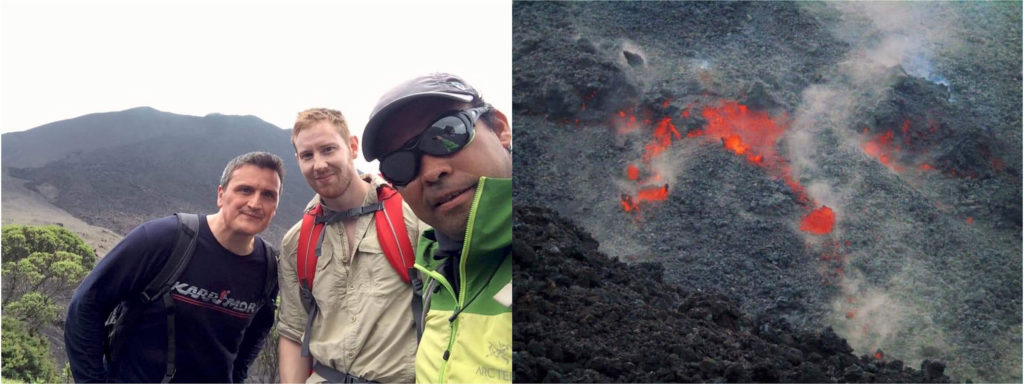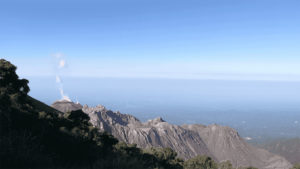Dr. Paul Wallace
In early June 2019, I spent 10 days on fieldwork exploring three of Guatemala’s active volcanoes and investigating the different forms of volcanic activity. These included Santiaguito dome complex (Santa María), Volcán de Fuego and Volcán Pacaya. During the trip, I worked with Silvio De Angelis (seismologist at University of Liverpool), Armando Pineda and members of the National Institute for Seismology, Volcanology, Meteorology and Hydrology of Guatemala (INSIVUMEH), which monitors volcanic hazards nationally.
For the first four days, we worked on and around Santa María volcano, which included climbing to its summit at ~3.7 km to gain the ideal viewpoint for safely observing eruptive activity at Santiaguito dome complex. We recorded several volcanic explosions, which occurred from the active Caliente vent, approximately every 30–60 minutes. We further took the opportunity to visit Santiaguito’s observatory (OVSAN) to spend a day with local scientists and maintain the monitoring equipment installed by our volcanology group in 2014.

From one active volcano to the next, we then travelled to Volcán de Fuego (volcano of fire). Here, we set up infrasound microphones (recording low frequency sound released during volcanic activity) to detect and characterise explosions releasing volcanic ash plumes and hazardous mud flows (lahars) which may swiftly threaten the local population. Ash samples from explosions were also collected, which, by analysing their chemistry and textures, will provide key information on the processes taking place within the volcanic system.

We finally spent a day at Volcán Pacaya, where lava is currently effusing from the crater. Here, we monitored and tracked the advancement of a lava flow along the volcanoes western flank to evaluate possible hazards.

Following these highly insightful visits at the active volcanic centres, we spent three fruitful days working with colleagues at INSIVUMEH in Guatemala City. Guatemala is, geologically, a highly dynamic country where volcanic hazards (in addition to interactions of local tropical weather and seismic activity) increasingly threaten the growing national population and infrastructure. Discussions and efforts were thus focused on the impact of volcanic activity and associated hazards on local communities, seeking ways to jointly enhance mitigation strategies, whilst sharing best practices. We anticipate that the long-standing collaboration between the volcanology group at the University of Liverpool and INSIVUMEH will continue to make strides in building resilience to Guatemala’s persistent volcanic activity.



Leave a Reply